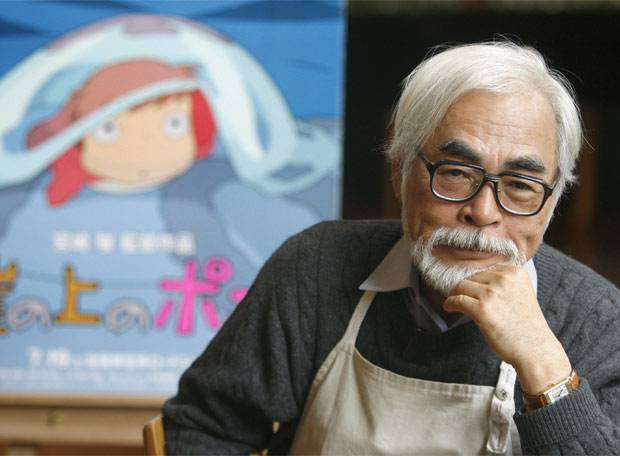By Nikolas Reda-Castelao

Via Book Riot
Earlier this month Hayao Miyazaki, founder of Studio Ghibli and creator of animated classics such as “Spirited Away” and “Princess Mononoke,” said that he was going to retire at age 72. His reasons, he details, are because of the intensive hours that feature film production presses on him and that he is unable to adapt in his old age. The direction of Studio Ghibli, founded in 1982 with its premier film “Nausicaä of the Valley of the Wind”, will be carried by its younger animators, he says. “The Wind Rises”, Miyazaki’s eleventh and final feature film, was playing at the Venice Film Festival at the time of this announcement and is slated for limited U.S. runs during November.
Miyazaki began his ascent to prominence as a director after many years of collaborating as an animator on films such as “Gulliver’s Travels Beyond the Moon” for Toei Animation. He rose through the ranks, eventually becoming chief animator on “Hols: Prince of the Son.” However, his creative vision proved overwhelming for the company and he broke off on his own, creating his first feature film, “Lupin III: The Castle of Cagliostro” in 1979.
Shortly after, he adapted a manga that he had in development over the course of his years into a film that was produced, written and directed by him, “Nausicaä of the Valley of the Wind” in 1984. With the release of this project, Miyazaki collaborated with Takahata and Tokuma Shoten to develop the production company Studio Ghibli in 1985, from which they developed Miyazaki’s next film, “Laputa: Castle in the Sky”.
The late ‘80s produced some of Miyazaki’s most iconic films, the ones that characterized his wildly imaginative animation style and whimsical storytelling. “My Neighbor Totoro” and “Kiki’s Delivery Service” were among them. His films constantly dealt with the themes he contemplated since his boyhood, such as environmentalism and feminism, in ways that were rather novel in the world of animation.
The ‘90s marked the explosion of Miyazaki and Ghibli with the 1997 release of “Princess Mononoke.” Realizing Miyazaki’s brilliance, Disney bought the rights to the studio soon thereafter. “Princess Mononoke” went on to become the first Miyazaki film to have a nationwide US release, and it soon went on to become a popular and critical success, too.
However, it was not until Miyazaki released the animated classic “Spirited Away” in 2003 that Ghibli became recognized as an unstoppable force in the world of animation. Following the same trajectory as that of “Princess Mononke,” “Spirited Away” became a critical and financial success. The remainder of the decade saw more excellent additions to the annals of Ghibli classics, such as “Howl’s Moving Castle” and “Ponyo”.
Unfortunately, though, as we draw on the final film of this cinematic giant, it does not escape us the irony in the whole. This man, who has showed beauty and joy in the beauty of the world, has managed to capture so perfectly ultimately holds the power to sadden us, to make us somber, simply by stopping before he withered away. His films were impactful as surpassing the typical phrase “Disney of the East” by being something much more than its western “counterpart”. Ghibli has not only provided immense joy to children the world throughout, but also challenged them to perceive both their environment and other humans in the light of compassion. That is something Disney could never ask us to do. Although he will continue working on smaller works, Miyazaki will be dearly missed.
Nikolas Reda-Castelao is a contributing writer. Email him at film@nyunews.com.


















